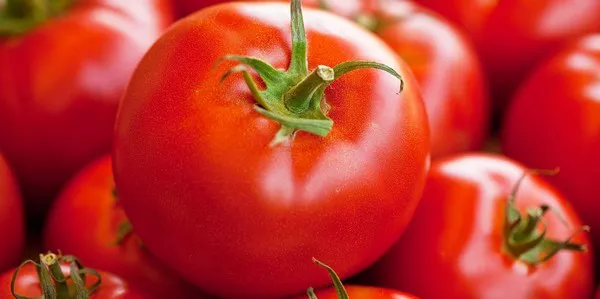Growing tomatoes can be incredibly rewarding, providing an abundance of juicy, flavorful fruits for your kitchen. However, tomatoes are prone to pest infestations, which can ruin your crop if not managed properly. One of the most effective and environmentally friendly methods to combat pests is through companion planting. By planting certain herbs, flowers, and vegetables alongside your tomatoes, you can naturally deter pests, enhance growth, and even improve the flavor of your tomatoes. This article explores the best companion plants for tomatoes to keep pests away, ensuring a bountiful and healthy harvest.
The Concept of Companion Planting
Companion planting is the practice of growing different plants in close proximity to benefit each other. This method has been used for centuries in traditional farming and gardening. The benefits of companion planting include pest control, improved pollination, better use of space, and increased crop productivity. Certain plants can repel harmful insects, attract beneficial predators, or provide a habitat for pollinators.
Best Companion Plants for Tomatoes
1. Basil
Basil is one of the most well-known companion plants for tomatoes. It not only enhances the flavor of tomatoes but also helps in repelling pests like aphids, whiteflies, and mosquitoes. Basil’s strong aroma confuses pests, making it difficult for them to locate the tomatoes.
2. Marigold
Marigolds are excellent companions for tomatoes due to their ability to repel a variety of pests, including nematodes, aphids, and whiteflies. The strong scent of marigolds masks the smell of tomato plants, making it hard for pests to find them. Marigolds also attract beneficial insects like ladybugs and hoverflies, which prey on common tomato pests.
3. Garlic
Garlic is a powerful natural pest deterrent. Its strong odor repels a variety of pests such as aphids, spider mites, and beetles. Planting garlic near tomatoes can help keep these pests at bay while also improving the overall health of the soil. Additionally, garlic has antifungal properties, which can help prevent diseases like blight.
4. Nasturtium
Nasturtiums are vibrant flowers that serve as a trap crop for aphids, meaning they attract aphids away from tomatoes. They also repel whiteflies, squash bugs, and beetles. Nasturtiums can improve the flavor of tomatoes and add a splash of color to your garden.
5. Borage
Borage is another beneficial companion plant for tomatoes. It deters tomato hornworms and attracts pollinators like bees. Borage is also known to improve the growth and flavor of tomatoes by increasing the level of certain minerals in the soil.
6. Mint
Mint is a great companion for tomatoes due to its strong scent, which deters pests like aphids, flea beetles, and ants. However, mint can be invasive, so it’s best to plant it in containers near your tomato plants to prevent it from taking over your garden.
7. Chives
Chives repel aphids, Japanese beetles, and carrot rust flies, making them excellent companions for tomatoes. They also improve the flavor of tomatoes and are easy to grow in small spaces or containers.
8. Onions
Onions help deter pests such as aphids, spider mites, and rabbits. Planting onions around your tomato plants can create a protective barrier against these pests. Onions also have shallow roots, which do not compete with the deeper roots of tomato plants.
9. Carrots
Carrots can be planted with tomatoes to help repel pests like root-knot nematodes. Additionally, carrots help aerate the soil, improving its structure and health for the tomato plants.
10. Asparagus
Asparagus is a long-term companion plant for tomatoes. It deters nematodes that attack tomato roots, while tomatoes repel asparagus beetles. This mutually beneficial relationship makes them excellent partners in the garden.
See Also: Why Tomatoes Are Flowering but No Fruit?
Additional Tips for Successful Companion Planting
Proper Spacing
When practicing companion planting, ensure that plants are spaced correctly to avoid overcrowding. Overcrowded plants can lead to poor air circulation, which can cause diseases and reduce crop yields.
Rotating Crops
Rotate your crops each year to prevent the buildup of pests and diseases in the soil. Avoid planting tomatoes in the same spot year after year.
Mulching
Mulch around your tomato plants to retain moisture, suppress weeds, and create a barrier against soil-borne pests. Organic mulches, such as straw or compost, can also improve soil health over time.
Attracting Beneficial Insects
In addition to planting pest-repelling companions, consider growing plants that attract beneficial insects. Ladybugs, lacewings, and parasitic wasps are natural predators of many common tomato pests. Flowers such as dill, fennel, and yarrow can attract these beneficial insects to your garden.
Avoiding Harmful Companions
While some plants are beneficial companions for tomatoes, others can be detrimental. Avoid planting tomatoes near brassicas (such as cabbage and broccoli), corn, fennel, and potatoes. These plants can attract pests or compete for nutrients, negatively affecting tomato growth.
Conclusion
Companion planting is a time-tested method to enhance the health and productivity of your tomato plants while naturally keeping pests at bay. By incorporating the right companion plants, such as basil, marigold, garlic, nasturtium, borage, mint, chives, onions, carrots, and asparagus, you can create a thriving garden ecosystem. Remember to practice proper spacing, crop rotation, and mulching to maximize the benefits of companion planting. With these strategies, you can enjoy a bountiful harvest of delicious, pest-free tomatoes.
Incorporating companion plants into your tomato garden not only helps in pest control but also contributes to a more diverse and resilient garden ecosystem. Happy gardening!


